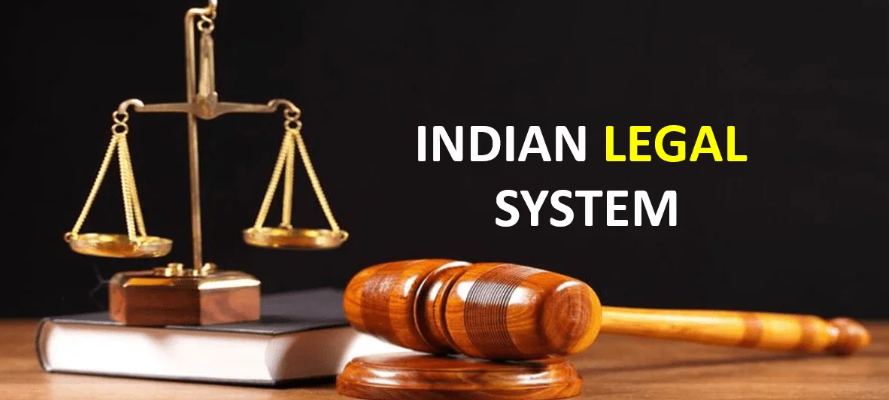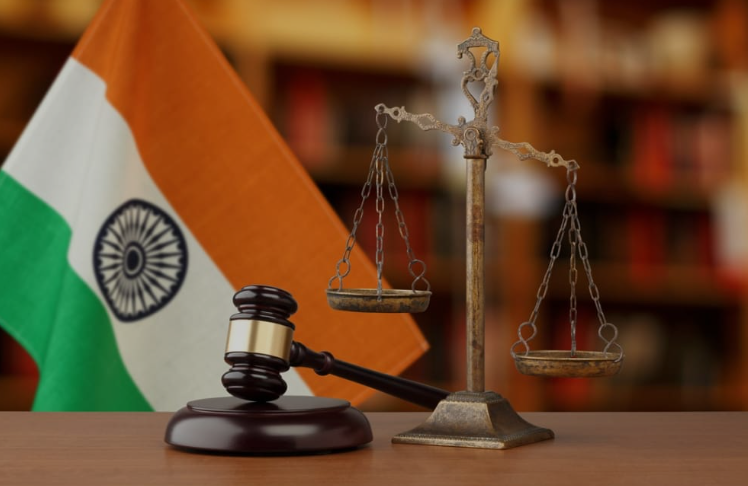The Way the Indian Legal System Empowers Economic Fairness
When you walk into a store and purchase items or your parents sign a contract for a new job, there is an invisible force field surrounding everyone that is also involved in that transaction. That shield is India’s own system of laws. But this is not merely a system for resolving fights among people; in India today, it actually determines who can get ahead, who can do business, and whether the economic pie gets distributed fairly to all Indian citizens.
Try thinking of the legal system as a cricket match umpire. The ref isn’t playing the game, but his or her decisions determine how fair it is. India’s courts, laws and legal institutions also don’t command the economy directly, but make up the rules that decide if a street vendor in Mumbai will have equal opportunity to an entrepreneur in Bangalore.
In this article, we’ll see just how India’s legal structure — from its Constitution to its consumer courts — labors behind the scenes to help (or hinder) economic fairness for more than 1.4 billion people.
The Constitutional Base: The Starting Point of Economic Rights
Basic Rights That Hit Your Wallet
The Indian Constitution, which came into effect in 1950, is not simply a political document — it’s an economic one. Although nobody is entitled to be equally wealthy, the judicial foundation for economic opportunity lies just there.
Article 19(1)(g) embodies the guarantee to every citizen of India to practice any profession or to carry on any occupation, trade or business. It also means that a farmer’s daughter can get her degree in medicine, or that a teenager from a small town can open an online business without first requesting permission from the government. Many professions were restricted based on caste, or community, before independence. The Constitution changed that forever.
Article 14 has established equality before law. In economic language that means that a small shopkeeper manages under the same rules as a big corporation. And a policeman can’t insist on bribes from a street vendor, even as he overlooks an unlicensed shopping mall.
Directive Principles: The Road to Economic Justice
Directive Principles of State Policy are mentioned in Part IV of the Constitution — ideals to be pursued by the government toward economic justice. These principles are not enforced in courts as fundamental rights are, but they heavily influence major economic laws.
Article 39 provides for the state to ensure that ownership and control of resources is used to serve the common good, not just enrich a few. Such a principle also gave birth to laws like the Land Acquisition Act, which attempts to strike a balance between the needs of development and those of farmers.
Article 39A led to the passing of The Legal Services Authority Act, 1987 which offers legal aid in the form of free services provided by lawyers-in-turn and a fee for lawyers from the government. For example, when a worker was wronged by an unscrupulous employer, or when a merchant had been defrauded by someone he thought to be honest. They could not fight for rights without free legal aid. This law allows economic justice to reach people who cannot afford expensive lawyers.
The Law of Contracts: Engine of the Economy
What Does the Indian Contract Act, 1872 Do to Safeguard Us All?
Every economic activity involves agreements. When you purchase a phone online, get a loan or lease an apartment, you are entering into a contract. Such contracts are governed by the Indian Contract Act, 1872.
There are a number of things the law does to make sure that contracts are fair:
Free Consent: A contract made under coercion, fraud or misrepresentation is voidable. For instance, if a bank representative manages to deceive an illiterate farmer into signing a high-interest loan through giving false information, the court can challenge the contract.
Competency to Contract: Minors (18 years old), the mentally insane, and drunk are protected from entering into a bad deal. It prevents exploitation of those in a weaker economic position.
Legal Object: You cannot form a contract whose object is an illegal act. If someone hires you to sell counterfeit medicines, that agreement is not legally enforceable and you can walk away with no penalty.
Real-World Impact on Small Businesses
Contract law does small business a giant favor. So, if a big company orders products from a small manufacturer and then refuses to pay once they have been delivered, the manufacturer can seek redress through the courts. It is the contract that compels payment by the little guy, through enforcement in court. Without these safeguards, big industry would be free to violate the small business.
Consumer Protection Laws: Balancing the Playing Field
The Consumer Protection Act, 2019
Way before there were such things as consumer protection laws, if you purchased a product that was of poor quality or received bad service, it was practically impossible to get justice. And then with the Consumer Protection Act, 2019, it was an entirely new ballgame.
Under this act a three-tier system of consumer courts has been established:
| Court Level | Claim Amount | Appeal Period |
|---|---|---|
| District Consumer Forum | Up to ₹1 crore | 30 days |
| State Consumer Commission | ₹1 crore to ₹10 crore | 30 days |
| National Consumer Commission | More than ₹10 crore | 30 days |
Key Features That Create Fairness:
Product Liability: Where product defects lead to harm, the manufacturer is responsible and not the seller alone. This is to say that big companies can’t hide behind retailers.
Unfair Trade Practices: The law makes it illegal to advertise falsely, misrepresent facts or use deceptive sales methods. If a business says its health drink makes children taller and does not have the scientific evidence to back it up, they can be fined.
E-Commerce Protection: With the rise of e-commerce, the 2019 Act introduced special rules to safeguard online shoppers from scammers.
Option for Mediation: Parties may attempt to resolve disputes through mediation before filing a lawsuit. This benefits poor consumers who can ill afford protracted legal wars.
Success Stories
In 2022, consumer courts in cities and towns across India resolved over 380,000 cases. An elderly teacher from Kerala received ₹15 lakhs as compensation from an insurance company that had erroneously rejected her claim. An online coaching platform that didn’t deliver promised classes paid a student in Delhi a full refund plus compensation. These wins demonstrate how legal safeguards create economic justice for everyday people.
For more insights on legal frameworks, visit Zista Legalis.
Antitrust Law: Not Just a Game of Monopoly
The Competition Act, 2002
Consider the scenario in which in all of India only one company sold mobile phones and they priced even a basic smartphone at ₹2 lakh. You’d have to buy it or do without. This is what competition law is for.
The Commission in exercise of its powers conferred by the Competition Act, 2002 prohibits:
Anti-competitive agreements: Price fixing isn’t allowed, nor is a secret pact to carve up the market among rivals
Dominant firm abuse: Big firms can’t throw their weight around and use market power to wipe out the competition
Anti-competitive mergers: Large companies can’t merge with other, rival businesses if it harms competition and consumers
Real Example: The CCI had in 2018 imposed a fine of ₹136 crores on Google for unfair business practices with respect to the Android mobile ecosystem. This penalty was a message to tech giants: All businesses, even wealthy monopolists, must play fair.
How This Creates Economic Fairness
Antitrust makes it easier for new firms to enter markets. A young founder with a superior idea can confront established companies without being unfairly shut down. This opens up space for innovation and economic advancement.
And for consumers, competition signifies better products at lower prices. To have several companies fighting over your business is to be its beneficiary.
Labour Legislation: The Guarantees of Workers’ Economic Rights
The New Labor Codes (2019-2020)
India recently streamlined 29 separate labor laws into four broad codes:
Code on Wages, 2019: Guaranteeing minimum wages and timely payment to all workers including those in gig economy
Industrial Relations Code, 2020: Guarantees right to workers to form unions and negotiate collectively
The Code on Social Security, 2020: Applicability to unorganized sector workers
Occupational Safety Code, 2020: To provide safe working environment
Why It Matters for Economic Fairness
Before those protections, workers were frequently abused. Factory owners could pay starvation wages, work people 16 hours a day or fire workers for no reason. Labor regulations are there to set a lower boundary on what is acceptable.
Example of Minimum Wage: In 2025, the federal minimum wage ensures that every worker can earn a living wage. A laborer who works on daily wages in small towns is entitled to nothing less than the minimum described above, thus ensuring that he remains above a poverty line even if employed.
Gig Workers Protection: Social Security Code mandates contribution to be made for gig workers, making app-based workers socially secure, with millions of people working for platforms like Uber, Ola and Swiggy.
-
🧮 Every business must prepare for these tax reforms: Tax Reform 2025 – What Every Business Must Prepare For
Insolvency and Bankruptcy Code: When Businesses Fail
The IBC, 2016 Revolution
Prior to 2016, pursuing money from failed businesses through the legal system was a nightmare. Cases dragged along for decades, while creditors waited for rulings. The Insolvency and Bankruptcy Code, 2016 overturned that by ensuring a time-bound process—typically 180 days, which could be stretched to a maximum of 270 days.
Creating Fairness in Business Failure
The IBC ensures equal treatment to all creditors under a waterfall:
- Employees’ unpaid wages (up to 24 months) are paid out first
- Priority goes to secured creditors (like banks) next
- Then goes the remaining assets to pay unsecured creditors
- Shareholders get paid last
This pecking order is what makes sure workers — the most vulnerable part of society — will not be left holding the bag when a company goes belly up. Before IBC, when companies went out of business, the owners frequently made off with whatever money was left over, leaving workers empty-handed.
Success Data: Since 2016, the IBC has resolved more than 3,000 cases with a potential recovery of about ₹2.85 lakh crores for creditors. Even more significant, it has brought back some healthy businesses and saved thousands of jobs.

Taxes: Spreading the Economic Pain
Goods and Services Tax, 2017
The GST replaced dozens of indirect taxes with a single unified system. Although it is a tax law, it promotes economic fairness in several ways:
Progressive Tax Rates: GST rates are 0-5 per cent for goods of basic needs (food grains, healthcare etc.), and 28 per cent for luxury items (expensive cars, high-end hotels). This way, poor people pay less of a proportion in tax.
Reduced Cascading: The cascading effect of tax was removed before GST in the form of reduced credit. Under the GST regime, businesses get tax credit for taxes paid on inputs, bringing down the overall cost of a product to consumers.
Formalization of Economy: GST brought millions of small businesses in the formal economy enabling them access to formal credits and government schemes.
Income Tax Progressive Structure
India’s income tax is based on the principle of “ability to pay”:
| Income Range (Annual) | Tax Rate (FY 2024-25) |
|---|---|
| Up to ₹3 lakh | 0% (Nil) |
| ₹3-7 lakh | 5% |
| ₹7-10 lakh | 10% |
| ₹10-12 lakh | 15% |
| ₹12-15 lakh | 20% |
| Above ₹15 lakh | 30% |
This progressive structure results in wealthy Indians giving a large share of their wealth to public resources — roads, hospitals, schools — that help everyone, and also translates into a redistribution effect.
Learn more about India’s taxation system at the Income Tax Department.
Property Law and Land: Owning Property Rights
The Real Estate (Regulation and Development) Act, 2016
RERA changed the dynamics of real estate in India and made it more transparent and accountable. Prior to RERA, builders routinely missed their deadlines by years, misappropriated the funds of flat-buyers and handed over substandard apartments. Buyers had little recourse.
RERA’s Key Fairness Mechanisms:
Escrow Accounts: Builders have to deposit 70% of funds collected from buyers in a separate bank account, which can be tapped only for land cost and construction portion and not for other uses.
RERA Registration: All projects required to be registered under RERA before sale.
Carpet Area: Standardized definition of carpet area eliminates size-related frauds
Fast-track Dispute Resolution: RERA tribunals expedite dispute resolution
Severe Penalties: Penalties for infractions (up to 10 percent of project cost)
From the time RERA came into force, more than 90 thousand projects have enrolled and as a result a sense of trust has come in among consumers pertaining to real estate.
Land Acquisition Laws
The Right to Fair Compensation and Transparency in Land Acquisition, Rehabilitation and Resettlement Act, 2013, guarantees compensation to farmers when the government acquires their land for development — generally four times its market value in rural areas and twice the market price in urban areas.
This would help prevent the past abuses of landowners, often from poor and minority communities, being forced to sell their land for trifles while developers made millions.
Banking and Financial Laws: Economic Tools Access
Banking Regulation Act and RBI Guidelines
The laws of banking make it possible that financial services can get to all the people of India and not just the rich. The Pradhan Mantri Jan Dhan Yojana, supported by banking regulations, helped to open more than 460 million bank accounts for Indians who had never had one before and brought them into the formal financial system.
Fair Practices Code: In terms of RBI guidelines, banks are required to:
- Deal with all comers on an equal footing
- Provide loan details in the native language(s)
- Not harass borrowers unfairly
- Allow reasonable time to repay loans in case of genuine inability to repay
The Microfinance Revolution
And the formal recognition of microfinance organizations has opened credit doors for millions of very poor women. Very small, self-help groups can now borrow money legally to start small businesses — selling vegetables, working as tailors or raising livestock — and lift households out of poverty.
Intellectual Property Laws: Protecting Innovation
Patents, Trademarks, and Copyrights
IP laws promote economic justice by guarding against theft of innovations. An independent inventor who creates a useful gadget could patent it, and prevent large companies from taking it over — stealing the idea and mass producing the thing without paying royalties.
There are specific provisions for public interest in the Patents Act, 1970 (as amended). So, for instance, Section 3(d) precludes the “evergreening” of patents — big drug companies can’t tweak existing medicines a little bit and then get extended patent protection to keep prices inflated.
This clause has enabled Indian firms to manufacture cheap generic drugs, which have become life-saving medicines for the poor. India is known as the pharmacy of the world; it supplies more than 50% of global generic demands.
Weaknesses: Where the System Comes Up Short
Even as it has heavy weaponry of laws, the Indian legal system has serious barriers against economic fairness:
Judicial Delays
In 2024 India’s courts have over forty-five million (4.5 crore) pending cases. The typical duration of a commercial dispute from start to resolution is 3.5 years. For a small business already waiting for payment, this delay can be the difference between bankruptcy and survival.
Access Barriers
Even with the benefit of free legal aid, many poor Indians do not know their legal rights or how to navigate the legal system. But language barriers, fear of authorities and ignorance mean that millions never seek justice.
Implementation Gaps
Fine laws on the books don’t always work in practice. Corruption, bureaucratic delays and a shortage of enforcement staff can lead to laws not being enforced as they should in isolated regions.
Corporate Legal Advantage
Big business can marshal expensive lawyer teams and drag things out for years, while individuals or small businesses do not have the resources. This results in a lack of level playing field while legally having equal rights.
The Forward Path: Speeding and Cheapening Justice
Technology Integration
Many court processes have been digitized in the e-Courts project. Online filing, virtual hearings (especially now), case tracking systems that don’t require a trip to the courthouse, they all contribute to making justice more accessible. The government has a vision of the entire ecosystem where a farmer in rural Bihar or Jharkhand can lodge his consumer complaint sitting at home instead of coming to court.
Alternative Dispute Resolution
Lok Adalats provide speedy, free settlement for smaller cases. In 2023 just one day settlement of over 1.2 crore cases in the Lok Adalats across India showed the potential of alternate systems.
Legal Literacy Programs
By making school education, community efforts and media campaigns enable more Indians to access protection of the law. Legal literacy camps, particularly for women and marginalized sections are held by NALSA (National Legal Services Authority).
Specialized Courts and Tribunals
Accelerated commercial dispute resolution courts, specialized tax tribunals and focused benches on environmental matters provide the means to expedite justice and bring in expert decision-making.

The International Comparison: Where India Stands
India stood at 63 out of 190 countries in the World Bank’s Ease of Doing Business Index (2020) versus 142 in 2014. It was the legal reforms — especially GST, IBC and RERA — that made this leap possible.
Despite this, India still trails behind others such as Singapore (2nd), New Zealand (1st) and China (31st) in contract enforcement and resolving insolvency. The biggest chink in India’s armor of an efficient legal system for economic fairness still is its huge backlog.
Real-Life Impact: Stories of Justice
Case 1: In Kolkata, a street food vendor was tortured by the local officials as they were asking for daily bribes. According to the Right to Information Act, 2005, he captured the evidence and complained about it. The officials were punished, and he no longer has illegal demands.
Case 2: A small garment manufacturer based out of Tirupur was not paid by a large export company for six months. He registered the case through MSME Samadhaan portal (Supported by MSMED Act, 2006). The payment was disbursed within 45 days with interest being awarded towards the penalty.
Case 3: A woman farmer in Maharashtra was given around one-third market price for her land during acquisition. She moved the Land Acquisition Collector’s court under the 2013 Act. Then, upon review, she was offered four times the market value as well as a resettlement payment — a family’s circumstances transformed.
These stories are a reminder that when people know and use their legal rights, the system can provide economic fairness.
Concluding Remarks on the Uncharted Pathway to Economic Justice
India’s legal system is like a gigantic bridge that links the constitutional aspiration of equality to the economic world in which we live every day. It does so by policing contracts. At the consumer level it protects buyers against fraud. It ensures the fairness of markets through competition laws. It dignifies workers, through labor laws. It protects the assets of people via law of property.
But the bridge has a few weak planks — judicial delays, gaps in implementation and barriers to access. Addressing these issues is the key to genuine economic fairness.
The greatness of the Indian approach is that it’s democratic. Laws can be challenged, enhanced and reformed from the input provided by society. The legal system is a changing landscape under your feet—the new labor codes, the IBC amendments and change in consumer protection are a testimony to how fast the system can or will adapt.
The legal system needs to be faster, more accessible and technology enhanced for the economic future of India. Every Indian — whether a tea seller in Assam, a software engineer in Hyderabad or a Dalit entrepreneur in Punjab — should feel assured that if they earn money from their own enterprise and economic rights are violated, the legal system will protect them from arbitrary state actions.
For we already have the constitution that 75 years ago bequeathed us a blueprint for economic fairness. The laws have created the form. The task now is to make sure that every Indian can actually live in this house of justice, cherishing the economic freedoms they are lawfully entitled to.
Economic fairness is not just about equal wealth; it’s about equal opportunity, security from exploitation and access to justice. India’s justice framework though imperfect offers a resort to the ends. With further improvements and citizen awareness, this could become a living reality for all 1.4 billion Indians.
Visit Zista Legalis for more legal insights and resources.
Frequently Asked Questions (FAQs)
Q1: Can I file a case without a lawyer in consumer court?
Yes, absolutely. Consumer courts are kind of like people’s court where anyone can come and fight cases without needing a lawyer as we have over 95 lakh pending cases currently in India! You can also register a complaint yourself through a few simple forms, which are available at district consumer forums or online. There is a large number of people who appear in consumer courts and argue their own case very well.
Q2: My employer doesn’t pay me minimum wage. What should I do?
You can file a complaint at an office of the Labor Commissioner in your district. You can also contact the State Labor Department or use the NCSC Complaint Portal. The employers are, under the Code on Wages 2019, liable to penalties and interest payment apart from being required to pay dues.
Q3: Duration of resolving a commercial dispute in India?
Commercial disputes on average are disposed of in 3-4 years in regular courts. But if your case is eligible for the commercial courts (disputes above ₹3 lakh), it could be settled faster — typically in 1-2 years. Alternative dispute resolution, such as arbitration, can be faster still.
Q4: Do we have protection in the contracts for small businesses from major corporations?
Yes, there are several laws specifically designed to protect small businesses. The MSMED Act, 2006 mandates large companies to make payments to small businesses within 45 days. The Competition Act will not allow big firms to misuse their dominant position. As well, common-law protections apply to all businesses uniformly.
Q5: If I can’t afford to pay for a lawyer, can I get free legal help?
Yes, Legal Services Authorities Act, 1987 gives free legal aid to those who are below certain level of income, members of Scheduled Castes/Tribes, women, children, disabled persons and victims of trafficking or disasters. Write to your District Legal Services Authority, or call the National Legal Services Authority helpline.
Q6: What is the GST percentage on key food staples?
Basic foodstuffs for example cereals, fresh vegetables and fresh fruits, milk and bread have 0% total of GST (exempt). There is 5% GST on some processed foods. This way, a basic diet is affordable for every income group.
Q7: Can a company terminate me for no reason?
It all depends on your type of work. Can a permanent employee be sacked without any reason under the Industrial Relations Code, 2020? In companies with more than 100 workers, permission from the government is required for layoffs. But contract workers have far fewer protections.
Q8: How do I know if the property builder is RERA registered?
Go to your state’s RERA website (such as MahaRERA for Maharashtra, UP-RERA for Uttar Pradesh and so on). They have a search option on their sites where you can type the project name or builder’s name to ensure registration and view details of projects including approvals and timeline for completion.
Q9: What becomes of employees’ unpaid wages if a company goes bankrupt?
Top priority is given — even higher than to banks that have a say in management systems — to workers’ unpaid wages for as many months as 24 preceding insolvency under the Insolvency and Bankruptcy Code, 2016. That way, workers get paid first ahead of everyone else.
Q10: Can I sue companies for false advertising?
Yes, false or misleading advertisement is an unfair trade practice under the Consumer Protection Act, 2019. You can file a complaint in consumer court for compensation. And the Advertising Standards Council of India (ASCI) has power to address complaints against false advertising, with companies at risk of punishment for transgressions.





